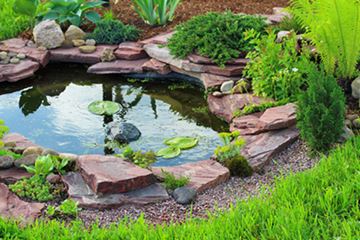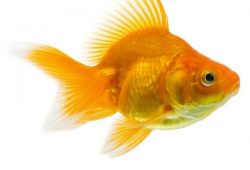How to Keep Pond Fish Healthy
The purpose of the article is to give you some information on How to Keep Pond Fish Healthy.

Contents
Tips for a Fish Happy Enviroment in the Garden Pond
Before bolting down to the nearest pet store or home garden center to buy fish for the garden pond, it is a good idea to do some research. Making certain that the pond is a healthy environment for fish is essential. This includes choosing nontoxic plants and having a good pump and filter system to keep water clear and moving.
Before Fish Go Into Their New Home
Once the pond is set up, it will need to run for about five days to clear itself of chlorine. If well water is used, this is not necessary. Plants will need four weeks to settle into the pond surround and pond itself.
Needs of Happy, Healthy Fish
Fish in need of oxygen will gasp at the surface of the water or hang around the waterfall.
In order for there to be enough oxygen for fish to survive in the garden pond, water must be kept moving. A pump and filter are important to keep water clean and clear and also move water continuously. Installing a waterfall or placing a bubble stone in the bottom of the pond are also good ways to oxygenate the water. Plants provide oxygen and should not be left out of the garden pond.
The pH level should be between 7.0-9.0. Ideal pH level is 7.4 and should not rise and fall to much, as it will cause fish to become distressed and possibly die. A pH tester should be added to the pond care cabinet. It is inexpensive and worth the purchase price to help keep pH regulated.
There are many good quality feed brands on the market today. The number one thing to watch for is that the first ingredient should be a fish product. If corn is listed as the first ingredient, pass it up. Corn should be found much lower on the ingredient list. Corn is used as a filler in feed and is of no nutritional value. Do not overfeed fish, doing so can cause polluted water from the build up of uneaten, decomposing food.
Overcrowding the pond can cause problems such as, fish that will not grow. Fish may also become sick and die. So, give them plenty of elbow room. To calculate how many fish will live in the garden pond, “The Real Mckoi” has it worked out like this, Allow 24 square inches of pond surface for every 1 inch of fish, excluding the tail.
Fish need a place to hide from predators. Flat rocks jutting out over the pond edge, flower pots and 4″-6″ PVC pipe pieces cut into 18″ lengths laying on the pond floor as well as, floating water plants all give cover from racoons, herons and curious dogs.
A Few Koi Varieties
- Asagi–dark/white head/orange on fins
- Bekko–white/black spots
- Doitsu–white/red/black
- Ginrin–white/red
- Goshiki–silver/red
- Hikari–shimmering white
- Kawarimono–orange/some white
- Kumonryu–white/black
- Ochiba–blue/orange
- Platinum Ogon–silver
- Shusui–white/red sides/black streak on back
- Tancho–white with red rising sun on head
- Utsuri–orange/black
- Yamabuki Ogon–gold
A Few Goldfish Varieties
- Comets
- Hibuna (common goldfish)
- Jikins
- Shubunkins (Calico)
- Tamasaba
- Wakins
- Watonai



